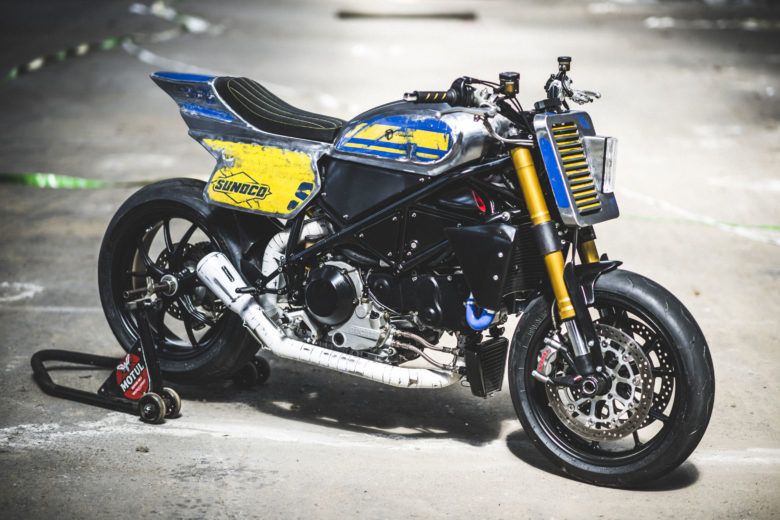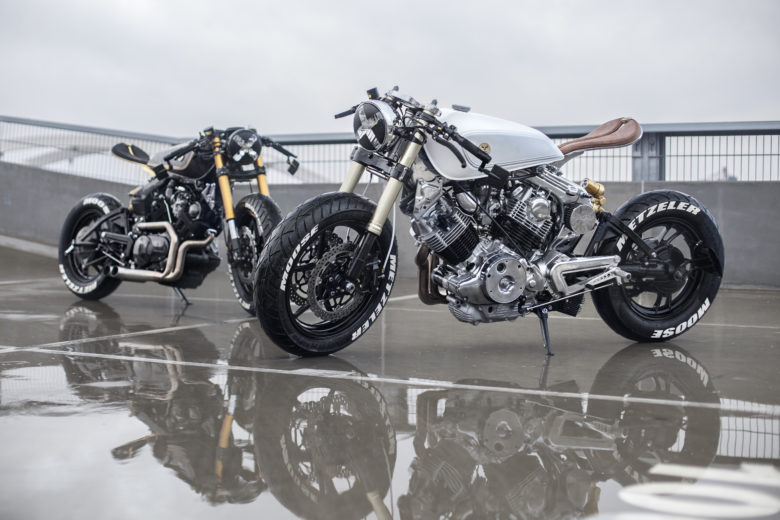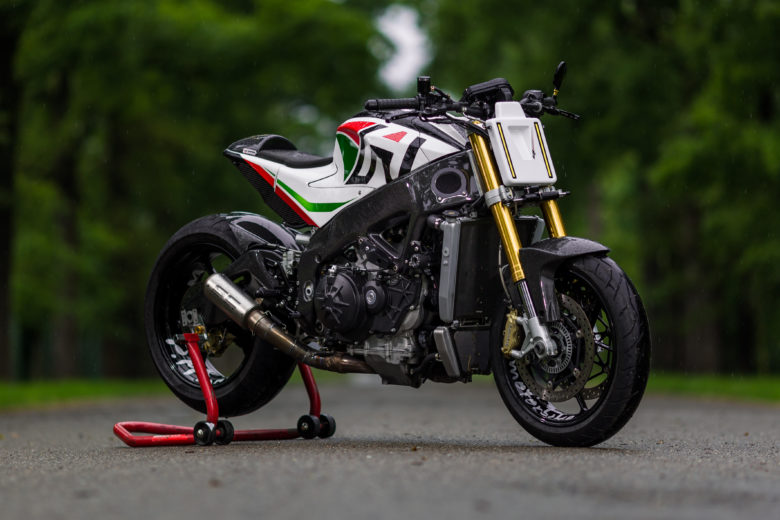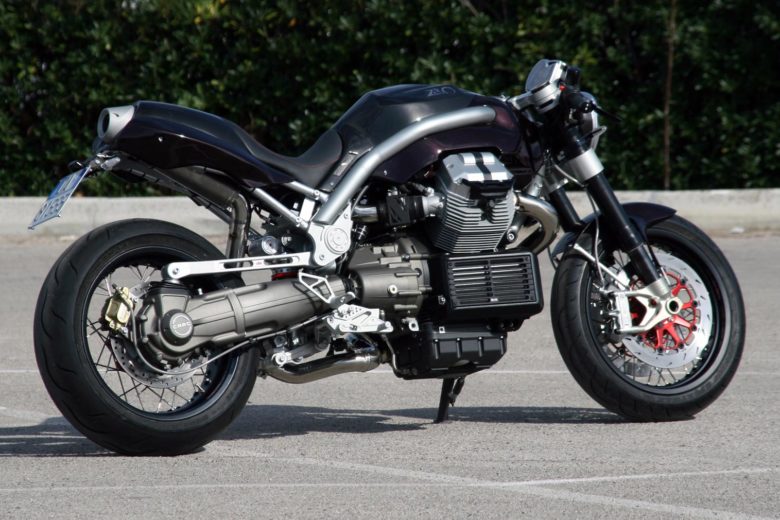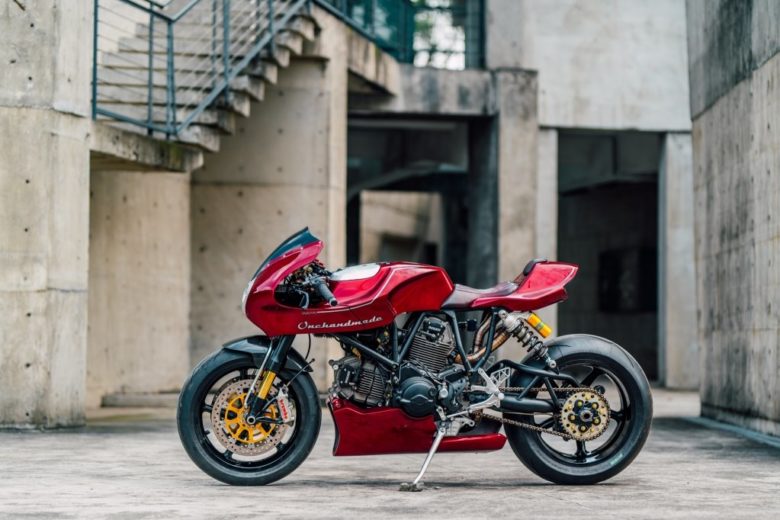The work of Vibrazioni Art Design is like nothing else. I love their sense of style and aesthetics. I could have their bikes sitting in the living room near the fireplace and just look at them. Of course, I would rather ride these creations as their builds are still rideable.
The perfection of imperfections
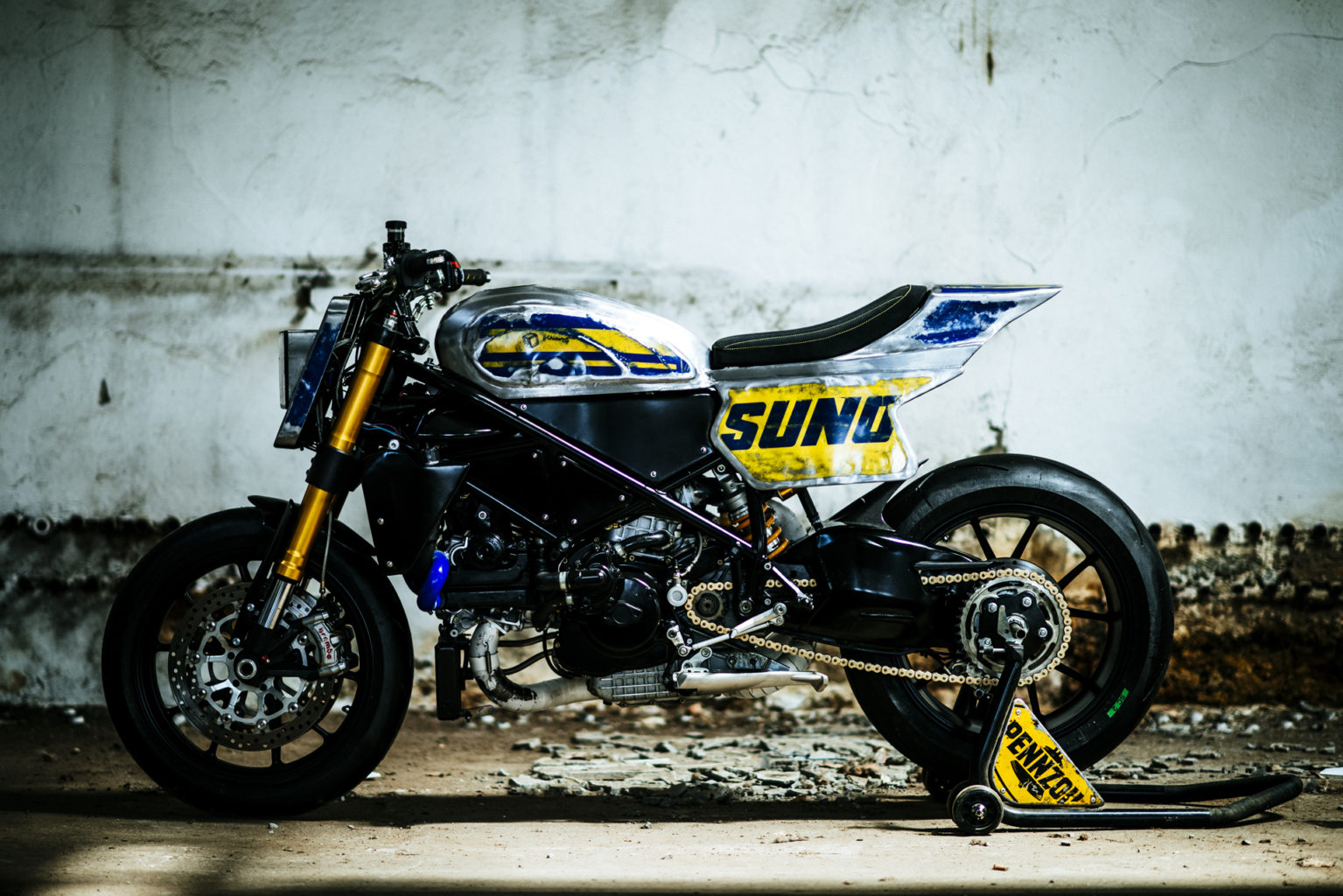
It’s worth mentioning that this is not just simply a “metal look and feel” they are after. The bodywork you see on all of their designs comes from old recycled barrels and the vintage logo’s You see – are also authentic: oil companies as found on the metal sheets. When you take a closer look at the details – You’ll see that they are far from searching for a perfect line, smooth surfaces only covered with the old paint jobs. These are actual pieces of old barrels – left uneven, hammered and put together.
This is a “metal terror” style I love
Plus – these things usually get a serious upgrade of the performance parts.
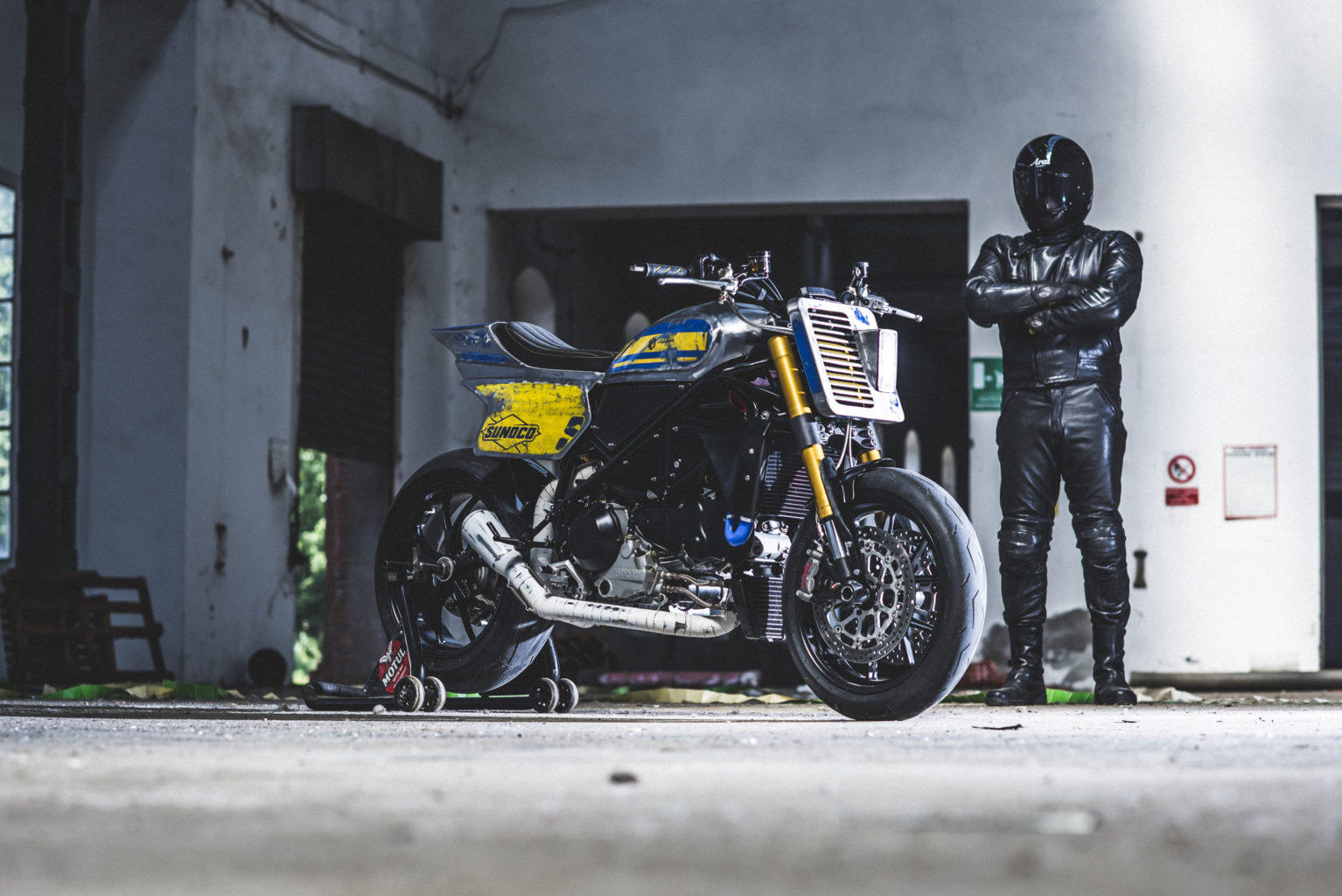
I’ve already listed their other creations a couple of times (link here). This time – they rebuilt the Ducati 749. A motorcycle released in 2003 as a replacement for 748. They were both “younger” brothers to the 916 and 999.
So for those of you who are real Italian petrolheads immediately a name pops up: Pierre Terblanche. The legendary designer is also responsible for the original design of the donor Ducati.
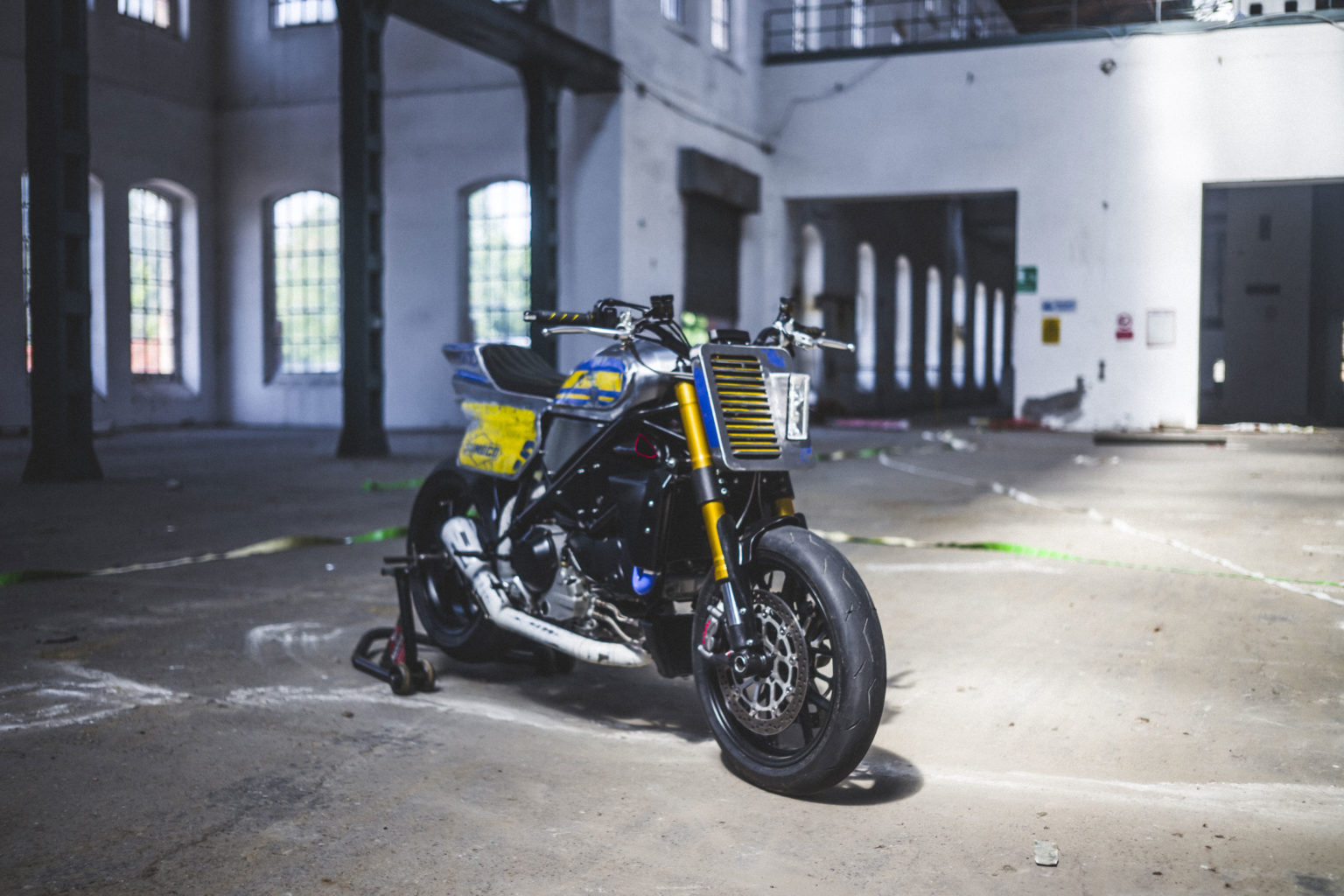
Smaller displacements mean that the engines rev faster and higher. The L-twin had 8 desmodromic valves and produced 116 bhp and powered a bike the weight 188 kg – so these are serious numbers.
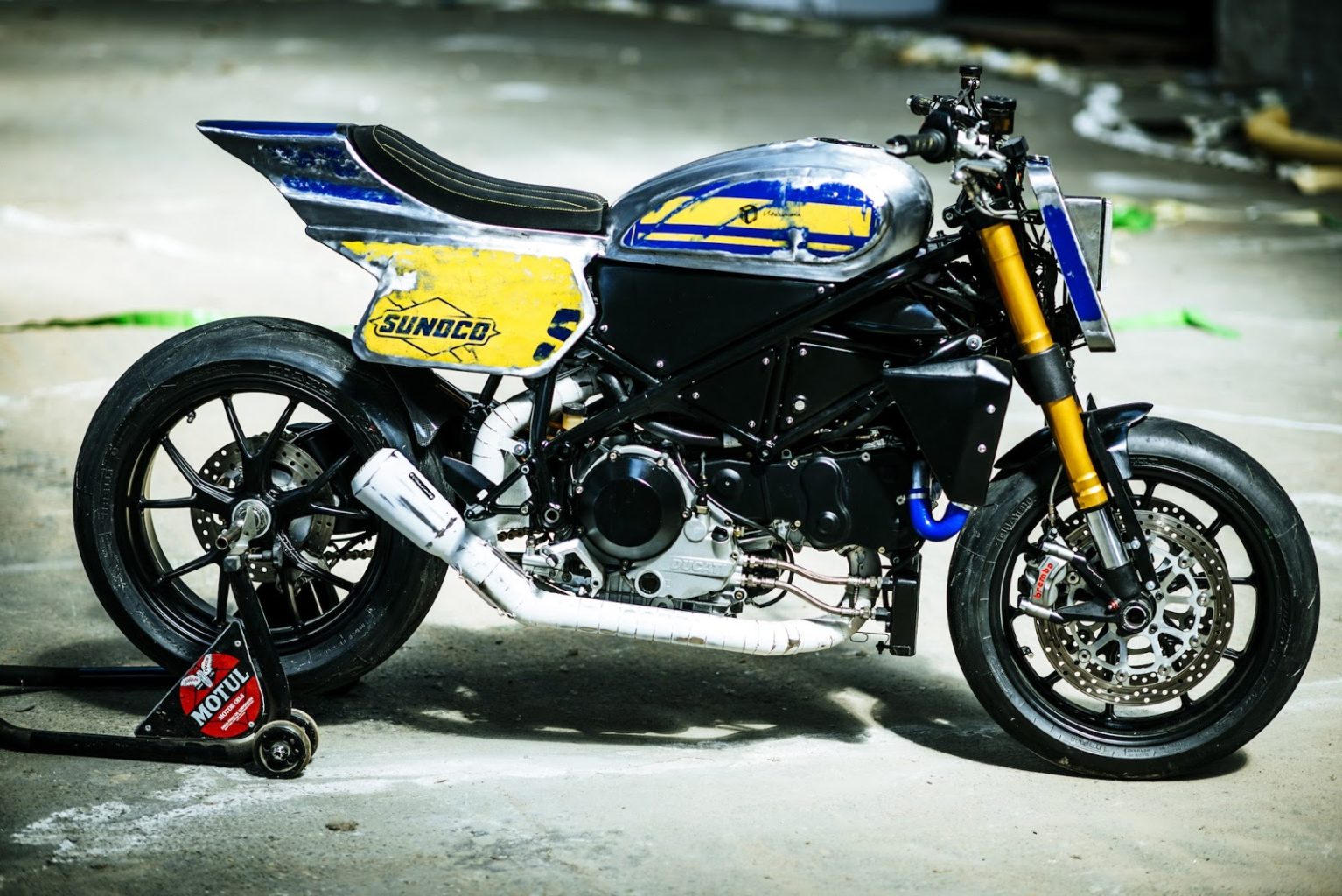
The Raticosa
Knowing the origins of the donor bike, it seems weird to modify the sportbike like this into a tracker design, obviously resembling the Scrambler. But it’s not only about the looks. As Vibrazioni guys have a special relationship with the Bolognian manufacturer – it’s all Ducati. The front forks come from the Streetfighter. The rear swingarm was provided by 1098. Handlebars come from the Multistrada. The fuel tank came from the Scrambler and was modified with Sunoco Oil barrel sourced metal. Matching the tail of the bike, made from the same material.
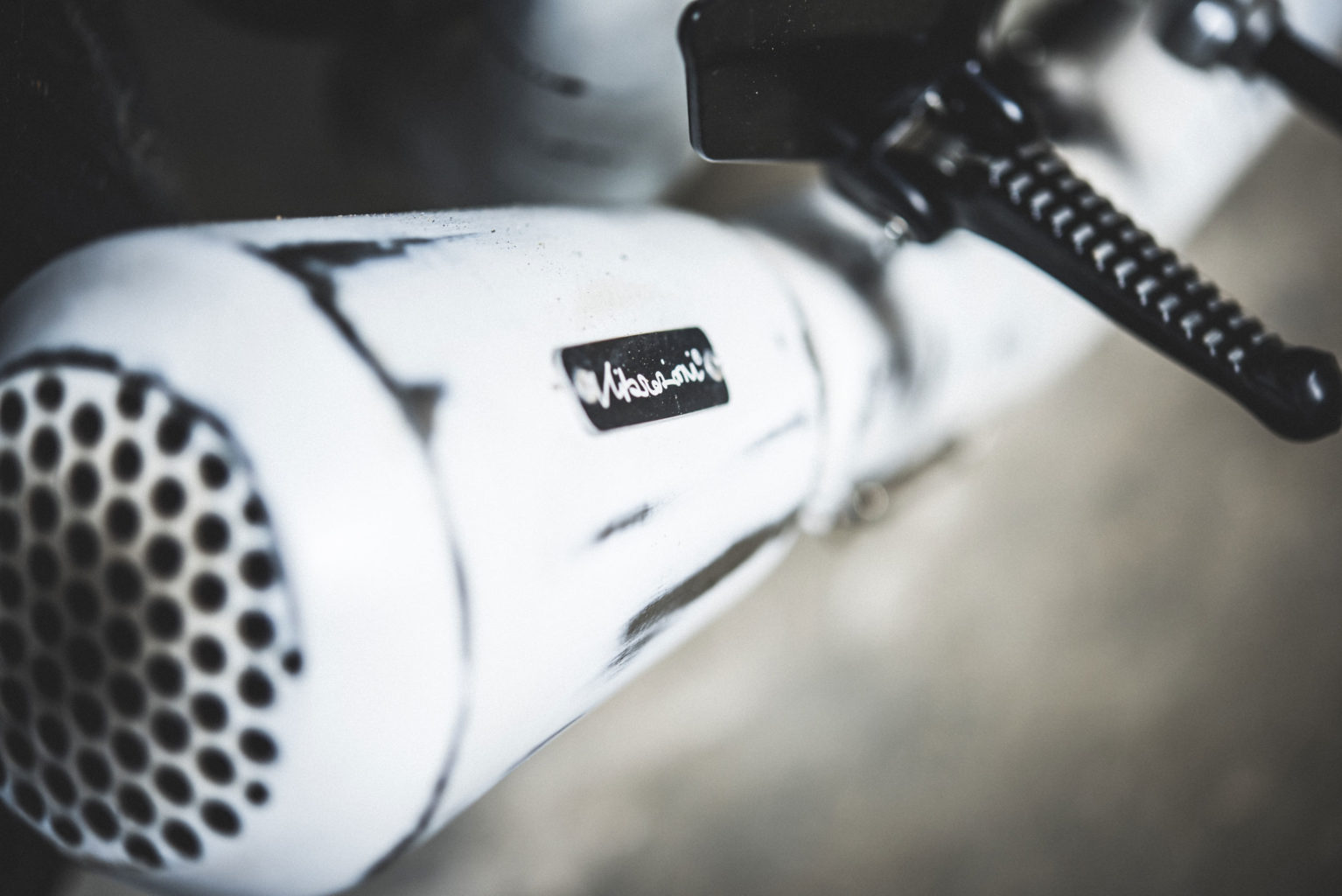
Considering that building bikes is not the main job of Vibrazioni, more like a side job; as the main focus goes to industrial styled furniture, that bears the same design approach.
Check out their portfolio (using the link below).
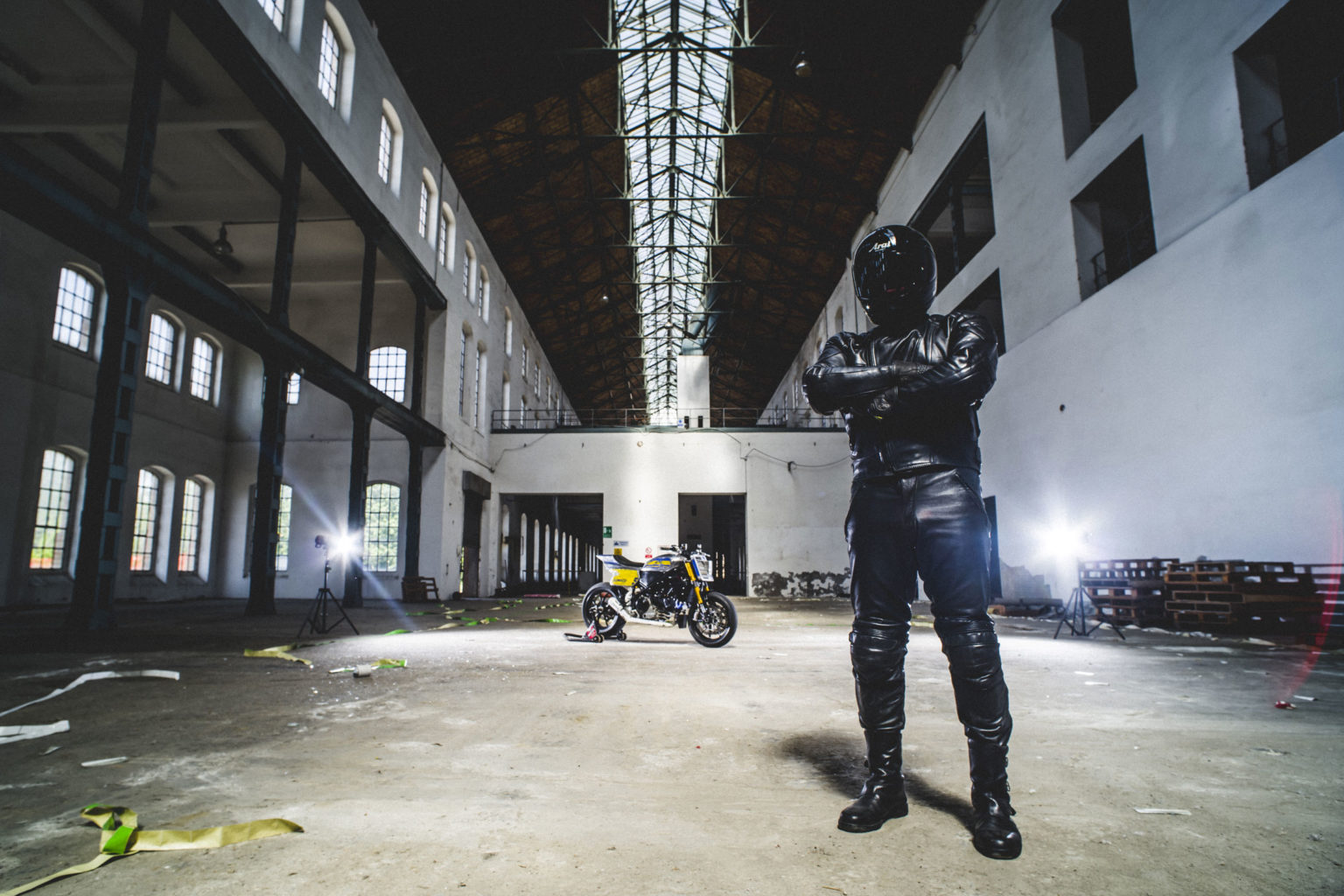
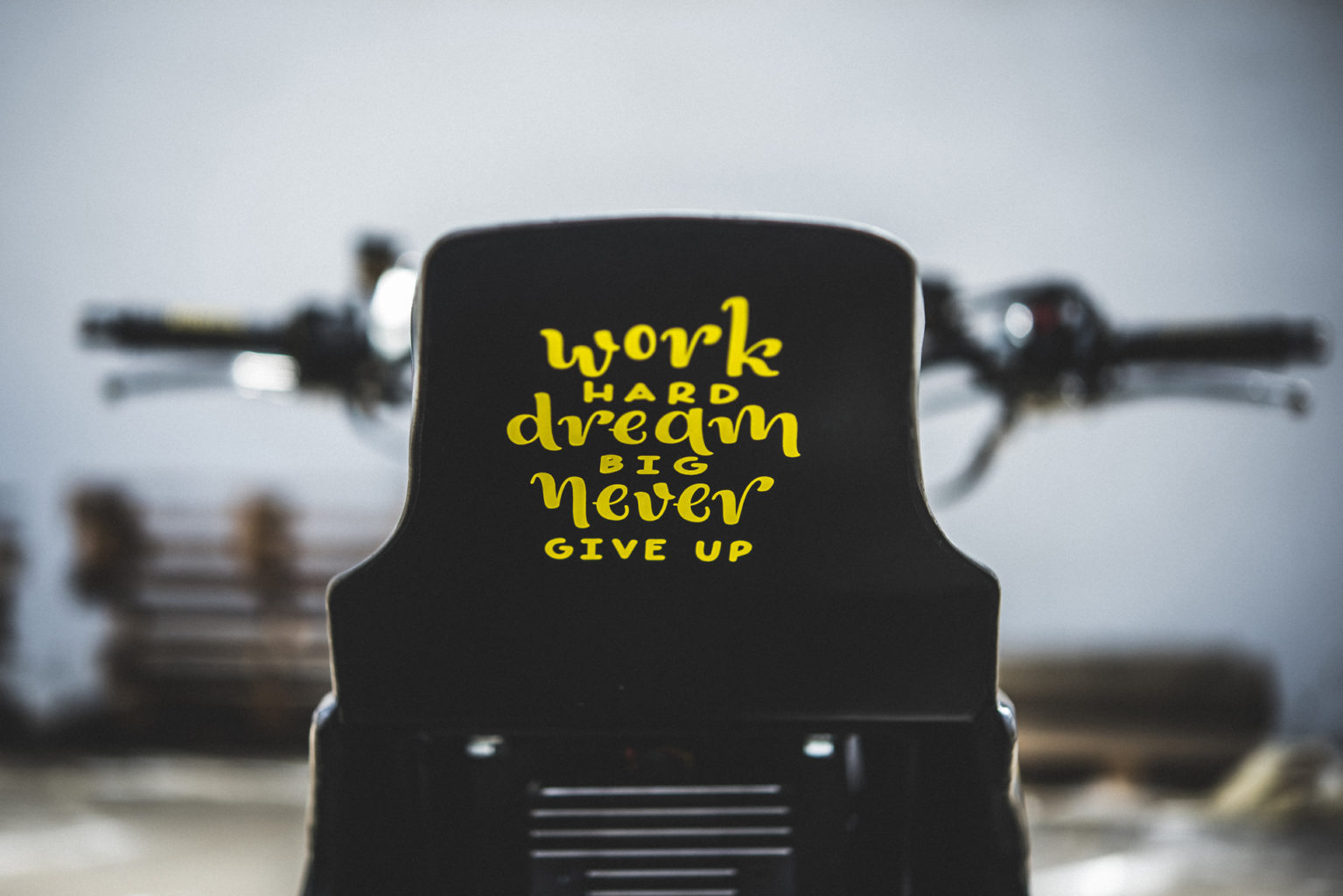
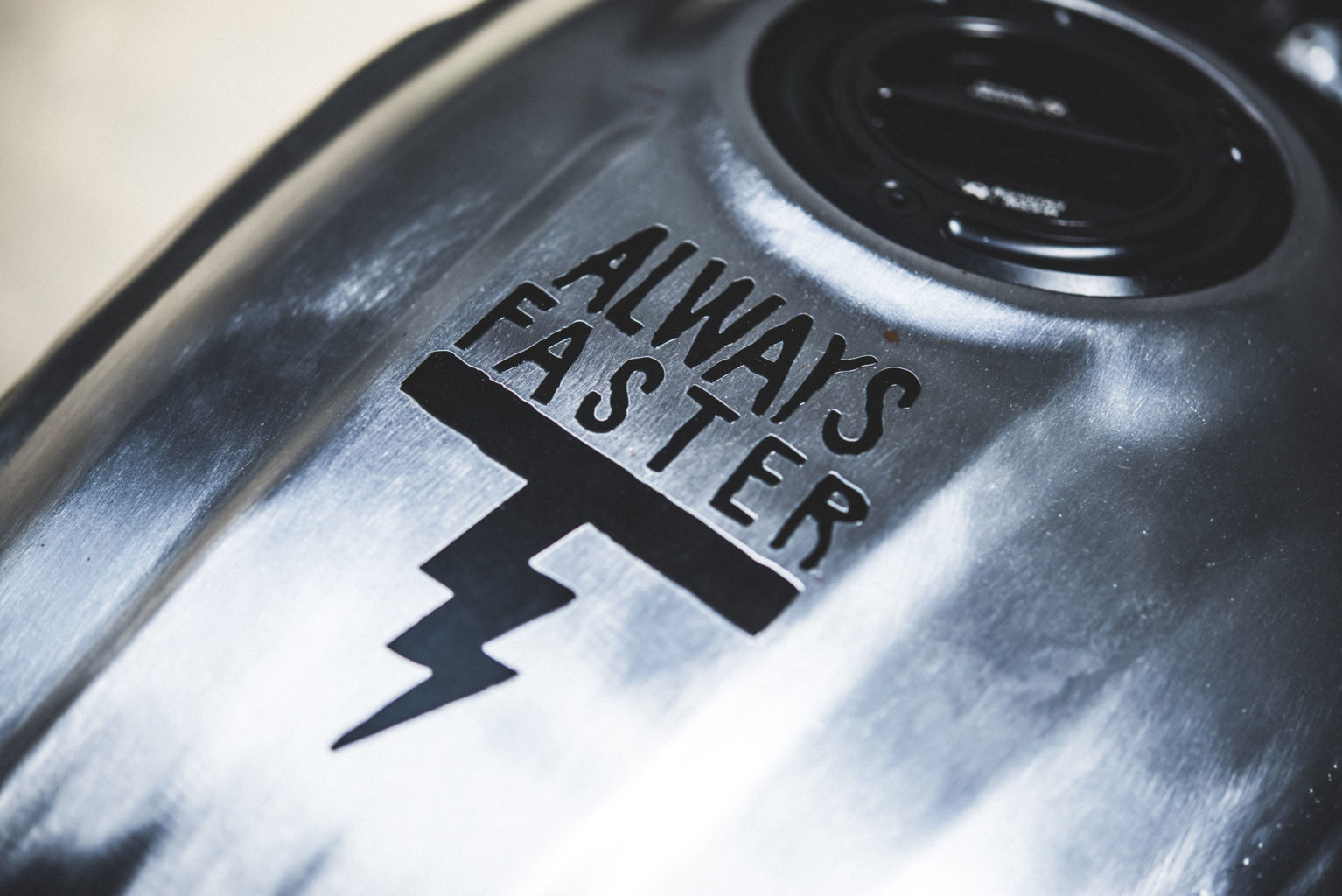
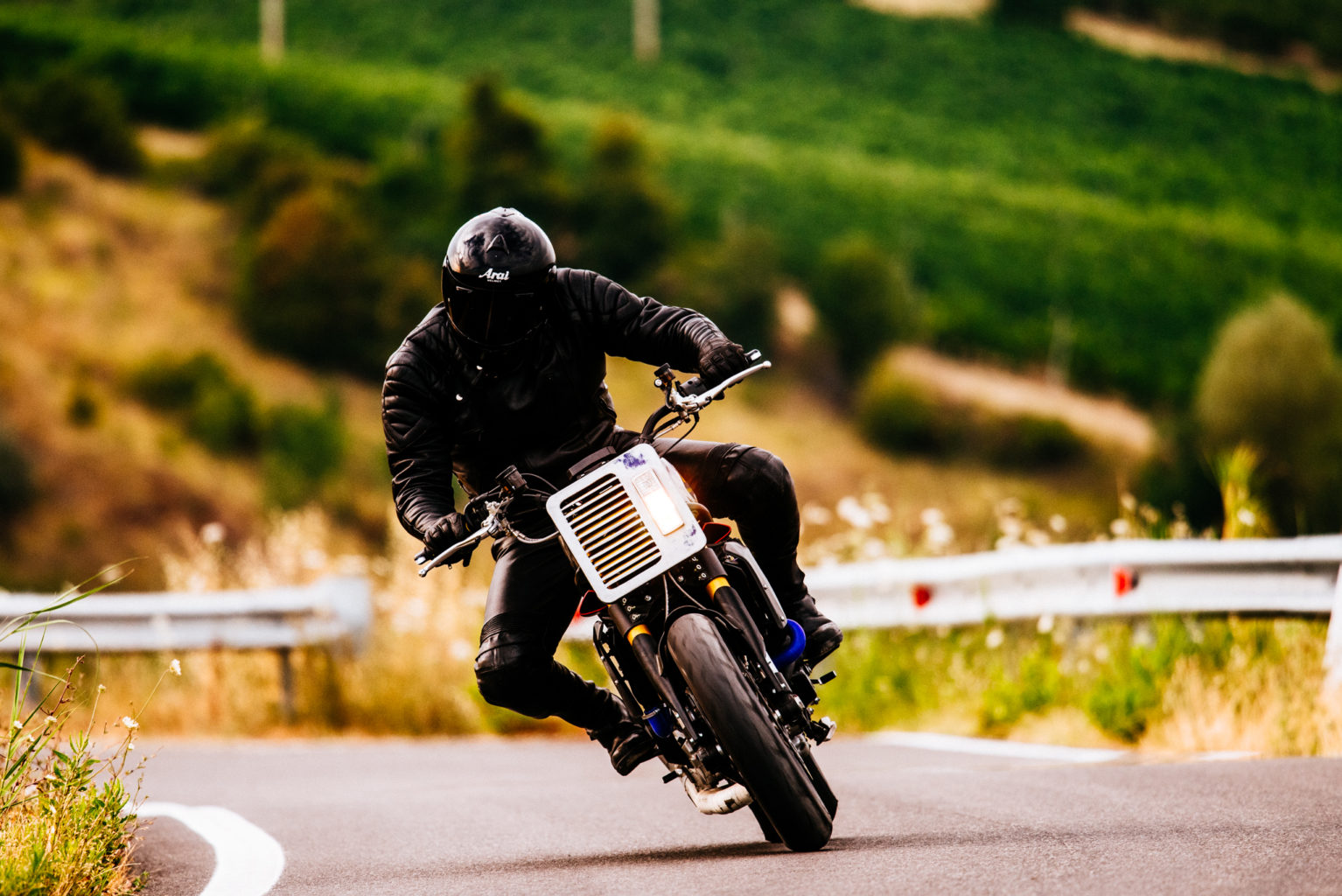
Source: vibrazioniartdesign.com

